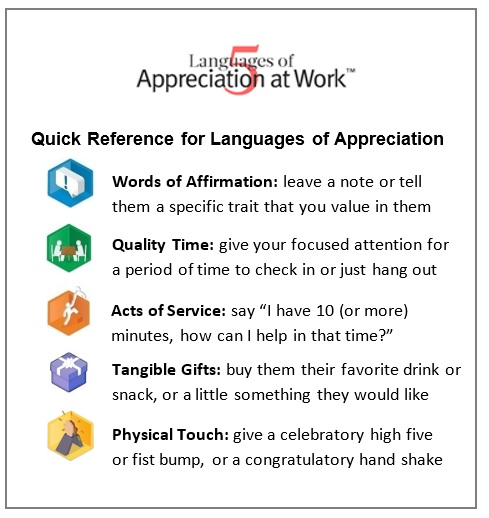Boost Employee Morale: 3 Simple Steps YOU Can Take
‘Low Staff Morale’ is one of the most common issues leaders report that they struggle with. “We need help,” one manager told me. “People are negative, complaining, and don’t feel like the management cares about anything but getting the work done. And, to be honest, that’s how they have been treated. We need to turn things around.”
PRACTICAL STEPS TO TAKE
Here are three action steps you can take to improve (your own and) others’ morale:
#1: Conduct a Self-Assessment
Ask yourself: What am I doing that isn’t helpful in creating a positive workplace? This could include both actions (complaining about a co-worker to another colleague) and attitudes (harboring anger and grudges for past offenses). Consider your response carefully. See if any of the attributes below might apply to you.
| Grumbling, complaining | Rarely compliment | Harbor anger/grudge |
| Irritability | Quick to blame/find fault | Say one thing, but do another |
| Quick temper | Gossiping | Withhold information |
| Impatient | See coworkers as a ‘work unit’ vs a person | Have an “it’s their problem” attitude |
Don’t beat yourself up if you have done any of these things (they are a common response to stress), but do recognize they may be a sign that you need to take some time to recharge and re-evaluate the image you would like to project about yourself.
#2: Don’t Contribute to the Negativity
The second proactive step you can take is to actively disengage from participating in negative interactions. This can simply mean that you stop complaining. (Remember the saying, “If you can’t say anything positive, don’t say anything at all”?)
Or, if a group discussion turns negative, remove yourself from the situation. You don’t have to say anything, or “call them out”. Just quietly excuse yourself and don’t contribute. Your leaving will send a message, and may lead to a follow-up discussion with one of the team members. Someone may say, “I noticed you left when we starting griping about management’s lack of communication.” A good response might be, “Yes, I’ve decided to try to not ‘add fuel to the fire’. I’ve found making negative comments doesn’t really help.”
#3: Begin to Communicate Positive Messages to Others
Actively demonstrating positive communication is the third simple step we each can take. Sometimes, this can be as simple as saying, “Wasn’t the sunset beautiful last night?” Or, “I’m sure thankful for air conditioning.” Positive comments tend to dampen and “throw water” on a smoldering, negative environment.
A second way to be positive is to share your appreciation for your teammates and the work they do. A simple “thanks” can be meaningful, especially if it’s specific. Something like, “Jen, thanks for getting your paperwork to me on time. That will help me get the information together for the manager’s meeting without having to rush at the last minute.” This can be an effective way to “soften up” those colleagues who seem fairly hardened and angry—though, it may take some time.
NOT Just Making Employees “Feel Good”
For managers and supervisors, a key point to understand is that communicating appreciation isn’t just about making people “feel good.” Rather, organizations function better when employees (and managers) feel valued. Conversely, when employees don’t feel appreciated, bad results follow:
- higher rates of tardiness and absenteeism
- increased incidence of not following policies and procedures
- more internal conflict and stress among team members
- decrease in productivity and quality of work
- higher turnover rate — people don’t continue with the company as long
- lower client satisfaction ratings.
All of these results contribute to higher costs for organizations. Research has shown that companies with high levels of staff who feel appreciated are 18% more productive and 22% more profitable than companies with staff who report low levels of feeling appreciated. In fact, finding and training new employees is one of the most expensive non-productive costs to businesses.
Foundational fact: Not everyone feels appreciated in the same way
Employees have different languages of appreciation (and unique actions within each language.) Believe it or not, not everyone likes verbal praise. Some people don’t trust words while others believe “actions speak louder than words.” For some, time together is the most important message you can send. We have identified 5 Languages of Appreciation in the Workplace (see the chart below).
It can be difficult to determine which of the five languages of appreciation an employee prefers. As a result, we created an online instrument that identifies team members’ primary and secondary languages of appreciation, and allows them to specify the unique actions important to them.
When an employee’s preferred language of appreciation and specific action that is meaningful to them are used, we can “hit the target” and help them feel genuinely appreciated.
Good things happen when employees feel appreciated
Staff morale can be improved by helping team members feel truly valued. The key is to communicate authentic appreciation in the ways that are meaningful to each team member. Over time, as leaders and colleagues learn to effectively communicate appreciation to each another, people begin to value others and feel valued for the contributions they make, which in turn increases their motivation and morale.
Tags: employee moraleCategories 5 Languages of Appreciation in the Workplace, Appreciation, Authenticity, Burnout, Employee engagement, Toxic leaders, Toxic workplaces


